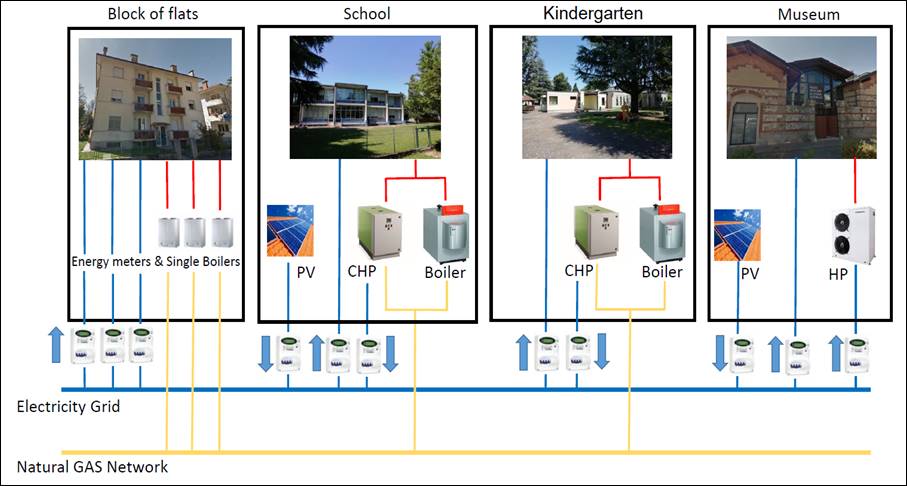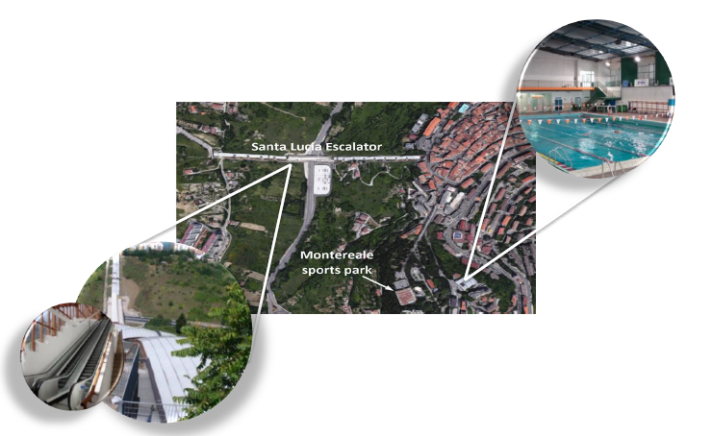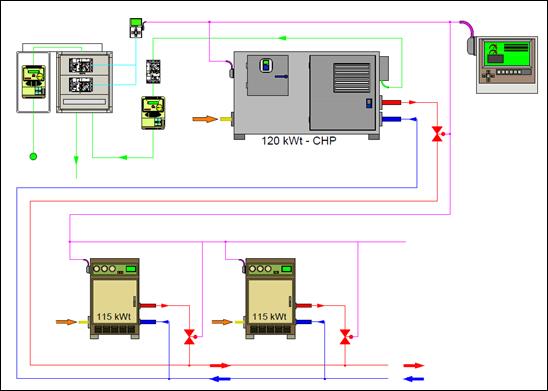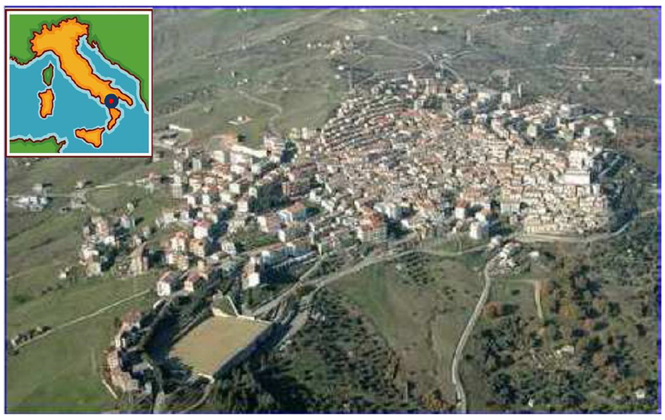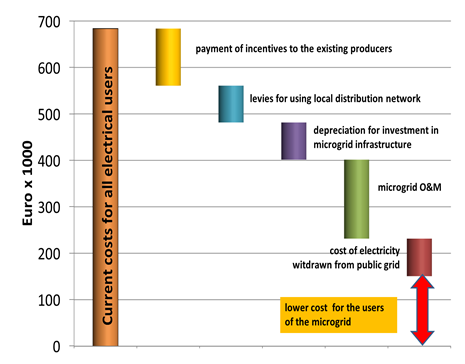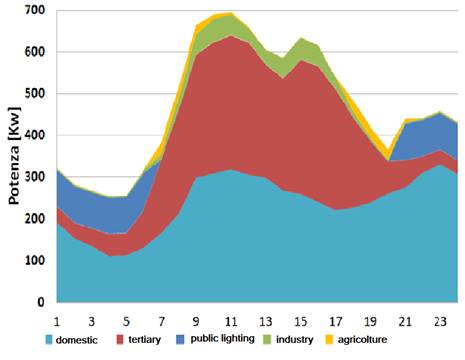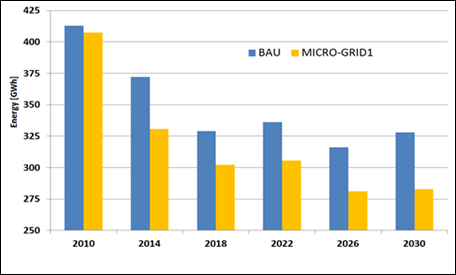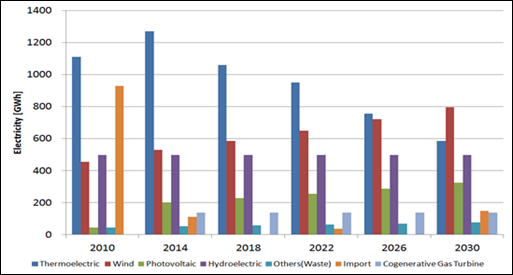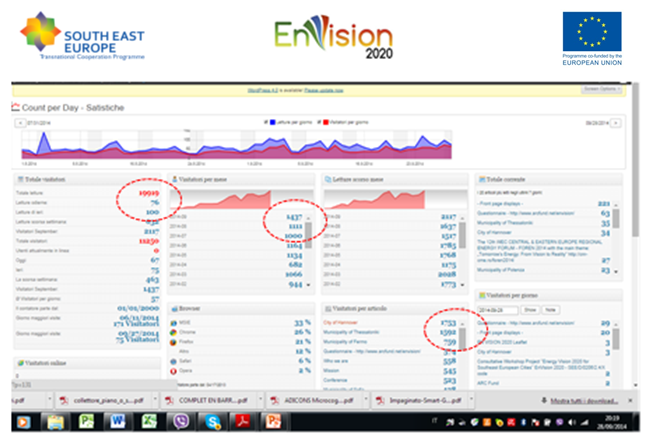Renewables and Energy Communities
|
INTERREG ALPINE SPACE |
ALPGRIDS
Increasing renewables uptake through MICROGRIDS in the Alps
|
2019 |
|
The ALPGRIDS project co-financed by the European Regional Development Fund through the Interreg Alpine Space programme, is aimed to increaserenewables uptake through microgrids
in the Alps. Twelve partners coming from five Alpine regions(Austria, France, Germany, Italy and Slovenia) are engaged in creating a transnational enabling environment to
foster microgrid solutions supporting in particular the creation of local energy communities.
Seven demonstrative pilots will be developed with the support of transnational exchanges of
knowledge and experience involving local energy stakeholders and policy-makers.
DeMEPA, as partner of the project, contributes in particular in the development of the pilot located in the Municipality of Udine, consisting in an urban microgridconnected to
the public grid. Due to the efficiency, both in terms ofcontinuity and quality of service, of the local electric networks the pilot does not provide for island operation.
According to the recent national law allowing collective self-consumption of the electricity locally generated the pilot is organized as renewable energy community involving four different types of buildings, all
owned by the Municipality. In addition to a primary school and a kindergarten,the pilot includes a museum and four apartment buildings for a total of 36 households.
Two PV plants, for a total of 36 kWp, are installed on the primary school and on the museum that also makes use of heat pumps for summer
and winter air conditioning. Two CHPs are planned to be installed for partial replacing of the existing boiler in the two school buildings.
DeMEPA took charge of the design of the pilot and of the measuring system of the pilot thermal and electric demand in order to optimize the CHPs sizing. From a preliminary assessment it is expected a reduction of 50
MWh/year of primary energy consumptionand about 26 % of the total electric bill.
Along the three-year development of ALPGRIDS project DeMEPA will perform the following tasks:
|
||
|
|
||
For more information on ALPGRIDS Project
|
INTERREG MED |
Progetto Pegasus
Promoting Effective Generation And Sustainable UseS of electricity
|
2017-2019
|
|
The PEGASUS project (link che riporta al PDR ROLL UP di Pegasus) cofounded by INTERREG MED programmein the frame of European Regional Development Fund, was focused on
experimenting a simulation of functioning of microgrids in 7 pilot areas on the basis of concrete situation with real data. This with the aim to reinforce the institutional capacity of Public Authorities to set up
operational measures favouringmicrogrids as an effective tool to optimize electricity production and consumptionand also to give
evidence of regulatory and administrative barriers hindering their extensive application.
DeMEPA, as partner of the project, designed and(has) taken careof the Municipality of Potenza pilot development. In the pilot two
energy-intensive infrastructures are involved: the swimming pool of Montereale Sport Park and the Santa Lucia escalator, 600 meters long, able to transport up to 9000 people/hour from the outskirts to the city
centre. The pilot was addressedat demonstrating the achievable advantages, in energy and economical terms , by the application of the Italian regulation “Scambio sul posto
Altrove”, an incentive scheme net billing type. The existing boilers in Montereale swimming pool will be partially substituted by a Combined Heat and Power system (CHP) driven
by the heat demand of the swimming pool. The related generated electricity is used to meet the electric demand of Montereale swimming pool while the surplus is fed into the local distribution network. In a
symmetrical way electricity is withdrawn from the network when local demand overcomes the electric power available from CHP.
Against a thermal demand of the swimming pool, CHP will operates always at its maximum power in order to assure its maximum efficiency. For more thermal energy request the boilers will enter into operation, according
to a master-slave logic.
To optimise the CHP size a campaign was carried out to measure the thermal and electric consumption of the pool and the electricity demand of the escalatorthroughout the year
2018, in order to take account the seasonal effects. The consumption of natural gas and the withdrawals from the grid was acquiredevery minute and then
processed on a monthly basisthrough a simulink modeltaking into account the CHP’s power
capacities from30 kW up to160 kW. The most convenient size of CHP resulted 120 kWt/65 kWe . This CHP during the year 2018 would enable
95 % and 85 % of the required thermal energy and electricity, respectively, of theswimming pool and furthermore to fed into the
distribution grid about 20% of the electricity consumed by the escalator, against 66802 s.c.m. of increased consumption of natural gas.
The corresponding Primary Energy Saving, ie the saving of primary energy achievable by a cogeneration system compared to separate systems for the production of thermal energy and electricity, resulted of about 20%.
This,in connection with the avoided loss in the distribution network due to the local generation, allow a carbon emission reduction of 80 t/year.
Taking into account:
the achievable benefits for the Municipality would amount in 2018 year to 73,000 Euro/year to be compared to the required capital expenditure of 246 M€ . The corresponding financial indicators:
make evident the financial sustainability of the pilot that can be replicated in similar situations characterized by a large thermal requirement in respect of the electricity consumption. With regard to this it
should be noted that based on the results obtained in the project a CHP has been installed in the swimming pool at the beginning of 2020 year.
Along the three-year development of Pegasus projectDeMEPA :
Finally DeMEPA prepared the final report concerning the cost–benefit analysis of the 7 pilots, including the reactions of the social and institutional stakeholders, collected by Partners through organized meetings
and questionnaires, and the Energy Regulation Authoritiesposition on themicrogrids.
|
||
|
|
||
|
Environment and Energy Unit Region of Lombardy ,
Italy
|
Technical-economic feasibility study of a microgrid
in the Municipality of Corleto Perticara
|
2013
|
|
The feasibility study has been carried out inthe framework of the FACTOR20 project, co-financed by the European Program LIFE +, aimed to assess
the expecteddevelopment of smart grid in European countries. The study takes into consideration a microgrid to be implemented in the
small rural Municipality of Corleto Perticara located in the Basilicata Region.
This Region imports about 52% of the consumed electricity and due toinsufficient meshing of the gridtogether with
insufficient reliability of the power lines had at the time an unavailability rate of the electric service greater than the national average one. In addition, in the area
including the Municipality of Corleto Perticara, the presence of long distribution lines (resulting in high losses in the network) and users with discontinuous and particularly disturbing withdrawal profiles
(steelworks) cause voltage fluctuation phenomena (flicker). It should be added that in some distribution lines the level of virtual saturation is reached mainly because of the high number of renewable sources
connections.
Smart grids capable of managing bidirectional flows of electricity are seen as the solution capable to overcome existing problems and to make the best use of distributed renewable sources.
In this context the microgrids, interconnecting localloads and resources of local generation and operating as a single controllable entity with respect to the public grid, take
on particular interest in reducing the congestions of the local electricity network. Through an Energy Management System controllinggeneration units, passive loads and energy
exchanges with the public grid, the microgrid integrates the behaviours and actions of all connected users: producers, prosumers and consumers.
The feasibility study takes into account a microgrid including 1569 consumers (public, domestic, commercial and industrial) and 15 prosumers having an electricity consumption of 3,472 GWh in 2012 year. The existing
1.132 kWp PV systems (including 134 kWp installed on prosumers buildings) and two wind generators with a total power of 1800 kW provide an annual generation of 3,8 GWh.
Assessed on the basis of daily consumption profiles a total of 935 MWh/year locally generated and exceeding the simultaneous electricity demand of the microgrid is fed into the public grid while 413 MWh/year
are withdrawn from the grid when the local generation is insufficient. Being the 998 kWp PV system and the 1800 kW wind farms, both owned by producers, connected to
the MV network, the6 MV/LV (15/0,4 kV) stations supplying all the consumersand the three local generation sites are connected, through
underground cables, to the Common Coupling Point of the microgrid placed at the electrical station AT/MT(130/15kv). From economic point of view the microgrid, after taking charge of:
allows to reduce by an average of 22% the cost of the electricity service for the users.
The benefits related to the microgrid are not limited to the reduction of supply costs but include:
|
||
|
|
||
|
Basilicata region,
Italy
|
The microgrids: a case study for the Basilicata region
|
2013
|
|
This study, jointly carried out with CNR-IMAA of Potenza, concernsthe achievable benefits in term of energy efficiency deriving from the use
of micro-grids technologies in the Basilicata region interested
by a noticeable increase of distributed renewable energy sources.
This increasing supply of intermittent sources in the electrical power system has important consequences on the electric system management. In particular, electrical systems must be enabled to manage and balance the
discontinuous power production (such as Wind and PV) with fossil production and storages.
In this framework the micro-grids can play a key role in the transition towards smart and active energy systems, providing more efficient energy systems through an engagement with consumers and businesses and the
valorisation of territorial peculiarities and renewable resources.
The study based on the TIMES Basilicata model developed by
CNR-IMAA
and able to represent the energy system of Basilicata Region over a 33-year time period (from 2007, the reference base year, to 2030) both in term of the generation side, considering for different fossil and
renewable energy sources the energy efficiency, the related investments and O&M costs, and of demand sectors (residential, commercial, industry and agriculture). The electricity distribution network is modeled
considering four voltage lines: HV, MV and LV, each one characterized by different parameters in terms of transmission efficiency, investment and O&M costs.
The study investigated the reduction of the electrical losses in thetransmission and distribution networks by implementing microgrids on the territory,
as one of the achievable benefit related tothe use of electricitynearby
the generation sites. Three different scenarios was considered:
The results of the study was presented at the 3rd International Exergy , Life Cycle Assessment and Sustainability Workshop & Symposium (ELCAS 3), July 2013.
|
||
|
Comparison of the total electricity losses in network between BAU e MICRO-GRID1 scenario
MICRO-GRID2 scenario: Energy planning
|
||
|
Municipality of Potenza,
Italy
|
Technical assistance to the implementation of EnVision 2020
“ Energy VISION 2020 for South East European Cities”
|
2012-2014
|
|
The EnVision2020 project, funded by the South-East Europe Programme,is aimed to develop significant steps in the sector of energy saving, renewable energy and sustainable
mobility, in order to achieve the "20.20.20" goal (20% reduction in emissions of CO2, 20% increase in energy efficiency, diversification of energy sources with renewable energy by 20%) in SEE countries. The
Envision2020 projectis based on the assumption that the energy elasticity (the ratio between the change in energy consumption and the change in GDP) of the target cities can be
changed based on forward-looking approaches, in particular by undertaking forecasting activities focused on the consumption of energy resources.
Demepa provided technical assistance to the Municipality of Potenza, one of the ten project partners coming from Bulgaria, Croatia, Greece, Germany, Italy, Romania and Slovenia.
The following tasks have been carried out:
|
||
|
|
||

